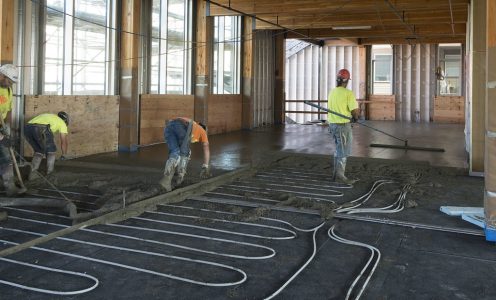Radiant heating systems have gained popularity in the quest for efficient and comfortable heating solutions. Unlike traditional forced-air systems that rely on blowing hot air through ducts, radiant heating systems utilize a different approach. These systems offer numerous advantages by emitting heat directly from a surface, such as underfloor heating or wall panels. In this blog, we will explore the benefits of radiant heating systems, from their energy efficiency and enhanced comfort to their cost-effectiveness and overall sustainability.
Superior Comfort and Even Heat Distribution
One of the most significant advantages of radiant heating systems is their ability to provide superior comfort by delivering even heat distribution throughout the space. Unlike forced-air systems that can create temperature fluctuations, radiant heat emits a gentle and consistent warmth from the floor, walls, or ceiling. This method mimics how the sun warms the earth, creating a more pleasant and natural environment. As a result, occupants experience fewer drafts and cold spots, enhancing overall comfort levels.
Moreover, radiant heating systems eliminate the circulation of airborne particles that can irritate allergies or asthma, as they do not rely on blowing air. This is especially beneficial for individuals with respiratory conditions or sensitivities.
Energy Efficiency and Reduced Heating Costs
Radiant heating systems are renowned for their exceptional energy efficiency. By utilizing direct heat transfer, these systems eliminate the energy losses typically associated with forced-air systems. Traditional methods often suffer heat loss as hot air travels through ductwork, encountering leaks or poor insulation. Radiant heating systems, on the other hand, ensure minimal heat loss and maximize energy conservation.
Underfloor radiant heating, for example, utilizes pipes embedded in the floor to circulate warm water or electric cables to generate heat. This method allows for excellent thermal conductivity, efficiently heating the space without wasting energy. By evenly distributing heat from the floor upwards, radiant systems also reduce heat stratification, where warm air accumulates near the ceiling. This prevents unnecessary energy consumption and lowers heating costs over time.
Design Flexibility and Space Optimization
Radiant heating systems offer remarkable design flexibility, allowing homeowners and designers to optimize space without the constraints of traditional heating methods. With radiant floor heating, for instance, there are no bulky radiators or forced-air vents, which can limit furniture placement and obstruct interior design choices. Instead, the heating elements remain hidden beneath the floor or within the walls, providing a seamless, unobtrusive heating solution.
The absence of visible heating equipment enhances the aesthetic appeal and frees up valuable space. Homeowners can maximize room layout and design, incorporating features such as large windows, open floor plans, and versatile furniture arrangements without the need to work around radiators or ducts. This advantage mainly benefits smaller living spaces, where every square inch counts.
Quiet and Maintenance-Free Operation
Radiant heating systems operate silently, offering a peaceful and serene environment. Unlike forced-air systems that can produce noise from fans, blowers, or ductwork vibrations, radiant heating systems have no moving parts that generate sound. This makes them ideal for bedrooms, nurseries, or any area with a desired quiet atmosphere.
Additionally, radiant heating systems require minimal maintenance. Traditional forced-air methods often require regular filter replacements and duct cleaning to maintain proper functionality and air quality. In contrast, radiant heating systems have fewer components that require maintenance, resulting in lower maintenance costs and less hassle for homeowners.
Environmentally Friendly and Sustainable
In today’s world, sustainability is crucial in choosing heating solutions. Radiant heating systems align with eco-conscious principles by reducing energy consumption and minimizing environmental impact. Their energy efficiency translates into lower carbon emissions and a reduced carbon footprint.
Furthermore, radiant heating systems can be combined with renewable energy sources, such as solar or geothermal, to achieve even greater sustainability. By utilizing renewable energy, homeowners can significantly reduce their reliance on fossil fuels, contributing to a greener future.
Conclusion
Radiant heating systems offer many benefits, from superior comfort and energy efficiency to design flexibility and sustainability. By providing even heat distribution, these systems ensure a comfortable and cozy living environment without the drawbacks of forced-air systems. The reduced energy consumption of radiant heating translates into cost savings and a smaller environmental footprint. With their quiet operation and minimal maintenance requirements, radiant heating systems offer homeowners a hassle-free heating solution. Embracing the advantages of radiant heating systems enhances comfort and contributes to a more sustainable and efficient home.

